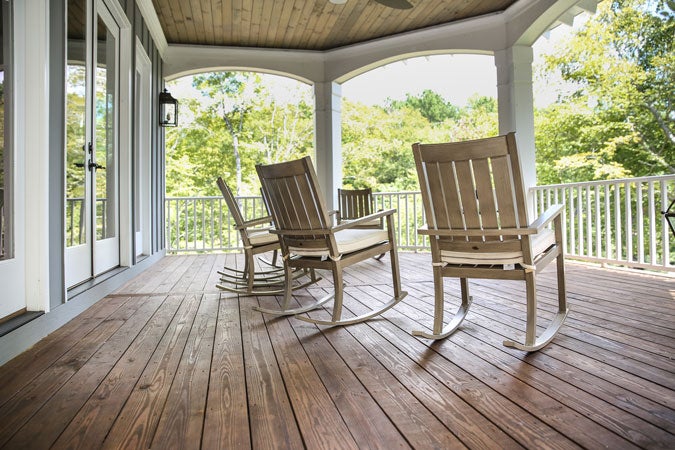When a reverse mortgage loan borrower no longer complies with their loan terms, one possible outcome is for the home to go into foreclosure. If the loan is a home equity conversion mortgage (HECM), foreclosure guidelines are set by the U.S. Department of Housing and Urban Development (HUD). Before getting into the specifics of HECM foreclosures under HUD, we’ll take a look at general reverse mortgage foreclosure triggers, which apply to both proprietary and government-insured reverse mortgages.
What is a foreclosure?
The term foreclosure is likely familiar to most borrowers. A foreclosure is the process of a lienholder (often the lender) taking possession of and selling a home to satisfy an outstanding lien. With a traditional mortgage, the lender may initiate foreclosure proceedings when a borrower fails to make monthly payments. Other circumstances which may trigger a foreclosure include unpaid liens, taxes, or insurance.
What are some maturity events in a reverse mortgage?
The following reverse mortgage maturity events will cause the lender to flag the loan as maturing or coming due. Some of these events are the natural conclusion of a loan. Natural maturity events include:
- The last surviving borrower passes away, and no surviving spouse is on the loan.
- The borrower sells or transfers the home.
- The borrower moves out of the home permanently.
- The borrower leaves home for more than 12 months.
Other maturity events cause the loan to go into default, which can result in foreclosure. These include but aren’t limited to:
- The borrower fails to maintain the home.
- The borrower doesn’t pay property taxes, home association dues, or property insurance.
- The borrower is still living but no longer resides in the home.
Deed in lieu of foreclosure
If the last borrower on the loan passes away, the borrower’s heirs need to communicate with the servicer and decide how they will resolve the mortgage. Several options are available to them, but none involves the heirs taking on personal debt. One option for estates that cannot afford to pay the loan balance is a deed in lieu of foreclosure. This document signs the title of the home over to the lender, thereby avoiding a foreclosure sale.
If the borrower’s heirs are unable to pay off the loan, fail to respond within the appropriate timeline, or are unwilling to provide a deed-in-lieu of foreclosure, the lender can initiate foreclosure proceedings.
How does the HUD foreclosure process work?
Foreclosure proceedings on a proprietary reverse mortgage are not regulated by HUD and follow individual state regulatory guidelines.
The oversight of HECMs, however, does fall under HUD, the agency primarily responsible for establishing rules and regulations for these loans.
HUD sets the following guidelines for how the HECM foreclosure process works.
- Maturity event occurs. Once one of the maturity events detailed above occurs, the borrower is responsible for notifying the lender. The foreclosure process begins on the event date, not when the lender is notified. It is crucial that borrowers immediately inform the lender of the maturity event.
- Notification. Within 30 days of the event, a “Due and Payable Letter” is sent via mail to the property address. This letter is sent to the borrower who defaults or to the heirs or spouse of the borrower who has passed away. They must respond to the letter within 30 days of receipt.
- Borrowers or heirs must pay off the loan. The borrower who is in default, the heirs, or the spouse of the last surviving borrower will have six months from the date of the notification letter to pay off the loan. The lender is required to send a pre-foreclosure notice during this time.
- First request for an extension. After six months, if the borrower hasn’t established a repayment plan or sold the home, the borrower can request a 90-day extension. HUD may approve this extension when the borrower meets certain requirements. It is important to know that it is up to the HUD, and not your loan servicer, who will need to approve the extension.
- Second Request for an Extension. After nine months have passed and the borrower hasn’t established a repayment plan or sold the home, the borrower can request a second 90-day extension from the lender. HUD may approve this extension when the borrower meets certain requirements. This too is subject to HUD’s review and approval.
- The lender will initiate foreclosure. IF all response deadlines are met and extensions granted, the lender will initiate foreclosure proceedings at the 12-month mark from the triggering event and once all extensions have expired. However, that timeline is not guaranteed. Depending on response times and circumstances, foreclosure can happen as soon as 30 days.
What are the responsibilities of the heirs once a foreclosure occurs?
Once a foreclosure occurs, heirs are no longer responsible for the loan. Also, as HECMs are nonrecourse loans, heirs and borrowers are not responsible for any loan balance that exceeds the home’s value. The Federal Housing Administration (FHA) mortgage insurance covers any deficits.
Many proprietary reverse mortgages are also nonrecourse, but they are not required to be.
How to avoid a reverse mortgage foreclosure
The best way to avoid foreclosure on any type of reverse mortgage is to be responsive and stay in close contact with the loan servicer after a maturity event occurs. Borrowers or heirs who are communicative will have access to more assistance and options than those who aren’t reachable. Here are some of the options that may be available for borrowers trying to avoid foreclosure:
- Repayment plans. Certain lenders will offer borrowers the option of a repayment plan when the borrowers default on their taxes and insurance. This option is only available to borrowers. Heirs have the choice of either paying off the loan and keeping the home or selling the home, satisfying the loan balance and collecting any surplus after the sale.
- Cash Repayment. For those with the available funds, repaying the reverse mortgage balance to satisfy the loan balance is always an option.
- Sell the home. You can sell the home and use the proceeds to satisfy the loan balance.
- Offer a deed-in-lieu of foreclosure. If the heirs don’t want to take responsibility for paying off the loan balance, they can offer the deed to the lender instead of going through foreclosure.



